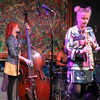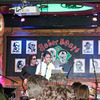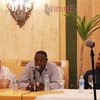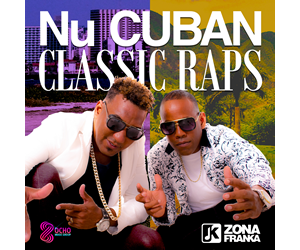Indice - Table of contents
New Stuff[hide]
Reportes: From The St... : Jazz Plaza ...
Fotos: Tom Ehrlich : Irakere 50th Annivers...
Fotos: Tom Ehrlich : Irakere
Resenas: Joey Altruda Presents: El Gran ...
Reportes: From The St... : Cubadisco 2...
Timbapedia: 09. Interviews -... : Carlos del Pino ...
Fotos: Tom Ehrlich : 2023 Monterey Jazz Fe...
Fotos: Tom Ehrlich : 2023 Monterey Jazz Fe...
Fotos: Tom Ehrlich : 2023 Monterey Jazz Fe...
Fotos: Tom Ehrlich : 2023 Monterey Jazz Fe...
Grupos: Tirso Duarte
Grupos: Tirso Duarte : Discography
Grupos: Charanga Habaner... : 8. El bla bla bla
Grupos: Pupy y los que S... : Tirso Duarte
Photos of the Day [hide]
The Roots of Timba, Pt I - Epilogue - Guaraguí
Epilogue
After 7 years of continuous study of timba, I was dumbfounded when I finally sat down and listened carefully to the Arsenio Rodríguez recordings of 1940-1951. In the areas of rhythm, lyrics, flavor, assimilation of Afrocuban influences, orchestration, bloques, and overall musical concepts, timba arguably owes more to Arsenio that any other figure.
Unfortunately, Arsenio was also an early pioneer of a negative trend that would later be adopted by the timberos -- he left Cuba. And like so many modern day Cuban innovators, he left a part of his muse and his heart in La Habana. Ned Sublette and David García tell the story much better than I can, but while Arsenio's relocation to New York was due more to death threats against his brother than his desire to seek fame and fortune, and while he achieved more commercial success than most of today's transplanted timberos, the hasty move had the effect of knocking him out of the creative "zone" that had enabled him to effortlessly pour out track after brilliant track during his last 5 years in Cuba. Arsenio recorded a lot more music -- some of it very good, like the 1952 bloque-laden tour de force No quiero -- but his later work was at least partially sabotaged by the distraction of trying to make his his music commercially acceptable in the United States and by his separation from the inspiration of Lilí, Chappottín, the barrios of Havana, and the Cuban public.
But to avoid ending our study of Arsenio's basslines on a "low note", I've saved one last masterpiece, the last currently-available son montuno recorded by Arsenio in Cuba.
1951 Arsenio Rodríguez - Guaraguí - tumbao 1
xx0x 0xxx 0xx0 xx0x 2-3 son clave
xxxx xxxx xxx0 x00x bass pickups
0x0x xx00 xxx0 x00x
0x0x xx00 xxx0 x00x MIDI example - tumbao 1
bassist: Lázaro Prieto
source: Dundunbanza
Guaraguí - tumbao 2
xx0x 0xxx 0xx0 xx0x 2-3 son clave
0x0x xx00 0xx0 xx0x MIDI example - tumbao 2
notes: Both tumbaos use chord progressions which were quite foreign to Latin music and which wouldn't been fully explored until the rock & roll of the late 60's.
i - IV - bVII - i (in Ami)
I - bVII - IV/6 - IV (in D)
Also note that the tumbaos are in different keys. The coros are exquisitely original as are the folklore-tinged guías, sung by Arsenio's cousin René Scull.
Finally, listen in this example to the brief absence of the bass when the coro comes in after the bloque. Imagine what it would have sounded like if Lázaro Prieto had waited 4 more claves before coming in -- or played a single long, low pedal tone. Arsenio didn't use timba gears, but if you listen carefully you can hear the timba of the future shining through the cracks of these scratchy but magnificent old 78's.
Our next stop on the journey towards the world of timba bass tumbaos will be the songo basslines of Los Van Van and Ritmo Oriental. These should come sooner since it's so much easier to hear the bass on these recordings. After all this time with Arsenio's 78s, I hereby officially retract any complaints I've previously lodged about the recording and mixing of songo and timba. In the meantime, enjoy reading about, listening to and playing bass with perhaps the most vastly underappreciated musical genius of the 20th Century.























